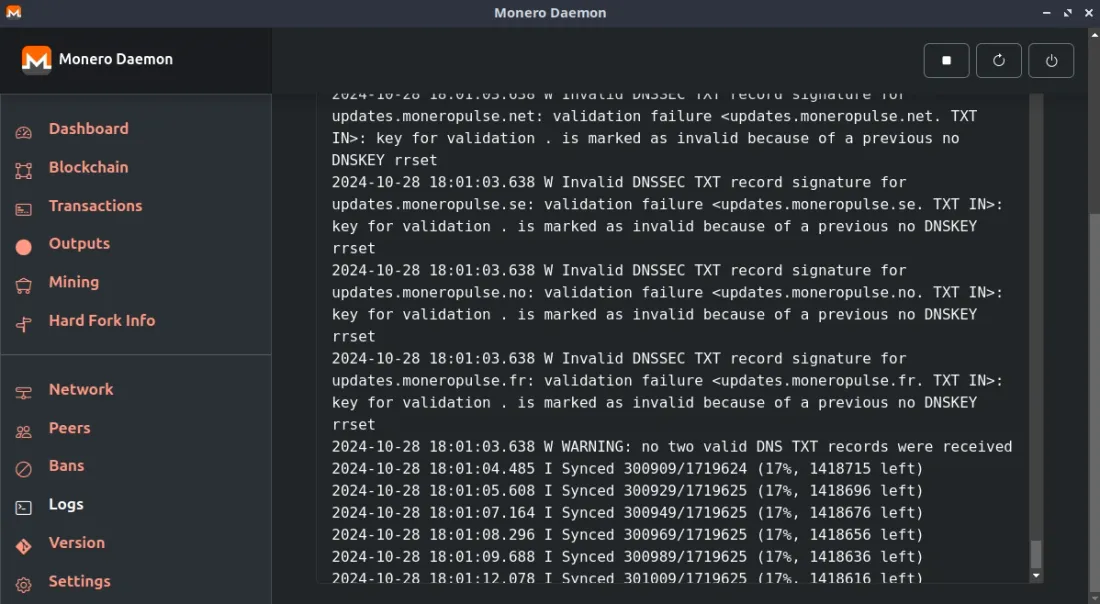Managing a full Monero node just got a whole lot easier with the Monerod GUI. This new desktop application, developed by everoddandeven and can be found at monerod-gui, brings an intuitive and powerful graphical interface to help users install, update, and manage their Monero daemon (monerod). Here’s a quick guide to setting it up and using its core features without getting tangled in technical jargon.
What is Monerod GUI?
Monerod GUI is designed to help users run and control a Monero node without needing to use the command line. It offers a streamlined interface for downloading, configuring, and interacting with monerod across different operating systems (Windows, macOS, Linux). Key functionalities include one-click updates, real-time monitoring, and custom configuration options that make it suitable for both beginners and experienced Monero users.
Key Features
Quick & Easy Setup
Monerod GUI automates the initial setup process by detecting the user’s operating system and downloading the latest compatible version of monerod. It even lets users set custom parameters, like enabling testnet, optimizing sync speed, and pruning the blockchain.
One-Click Updates
Stay up-to-date with the latest monerod releases with automatic update checks and one-click upgrades, ensuring a secure and fully synced Monero node.
Intuitive Control Panel
The app provides a simple control panel where you can start, stop, and monitor the Monero daemon’s status. Users can adjust RPC access, log levels, concurrency, and other configurations from within the app.
Real-Time Log Monitoring
Monitor monerod logs in real time, with filtering options to keep track of blockchain sync progress, transactions, or any error messages.
Cross-Platform Compatibility
Whether you’re on Windows, macOS, or Linux, Monerod GUI works seamlessly by identifying your operating system and selecting the correct monerod version to install.
How to Install Monerod GUI (for devs)
To make things even easier, here’s a simplified installation script to get you up and running. This script will:
- Clone the repository
- Install the necessary dependencies
- Start the application in development mode
Step-by-Step Guide
# Step 1: Clone the Monerod GUI repository
git clone https://github.com/everoddandeven/monerod-gui.git
cd monerod-gui
# Step 2: Install dependencies
npm install # Installs Electron renderer dependencies
cd app/
npm install # Installs Electron main process dependencies
cd ..
# Step 3: Start the application in development mode
npm start
Tip: This script uses npm, which is necessary for compatibility with Electron. Avoid using yarn due to known issues with node_modules in Electron builds.
Usage Highlights
- Initial Setup: On first launch, Monerod GUI will detect your OS and prompt you to download
monerod. Choose your installation directory and configure custom settings like testnet mode or fast sync. - Real-Time Monitoring: Use the control panel to start
monerodand monitor its activity through a live log viewer. - Updates: Click a button to check for and install new
monerodversions, ensuring your node is always up-to-date.
Advanced Usage for Development and Testing
| Command | Description |
|---|---|
npm run ng:serve |
Run the app in a web browser (development mode). |
npm run electron:local |
Build the app and run it locally with Electron. |
npm run electron:build |
Build an optimized, distributable version of the app. |
npm run e2e |
Execute end-to-end tests. |
Monerod GUI also provides Angular and Electron integration, so if you’re developing or debugging, it supports breakpoints and live reloading for rapid iteration.
Why is this so good?
Running a Monero node before was quite a cumbersome and resource intensive job, you generally need good hardware but also a reasonable set of linux skills people like SethForPrivacy have contributed to the community with useful docker link but nothing yet for the typical end-user. All in all, this should help grow the Monero network simply just by making it easier to grasp running a node without all the command line jargon!
Support the Developer
Developers make tools like Monerod GUI possible, and showing support keeps projects like this alive. If you’d like to contribute, consider starring the repository on GitHub or donating to support the project’s continued development.
Monero Donation Address: 84Q1SdQgFWaEWRn5KcvSPCQUa3NF39EJ3HPCTaiM86RHLLftqgTZpkP24jXrK5YpeedWbQAjHcFcDLpFJfr9TypfAU7pPjA
Or contribute to the original bounty which has ammased 8 XMR + already.
For more information, visit the Monerod GUI GitHub page and join the growing community of Monero enthusiasts simplifying the world of decentralized finance.
Try Easy Install (Linux & Windows)
You can also click to download directly from Github Releases or for linux amd64, use the download buttons below.


Member discussion